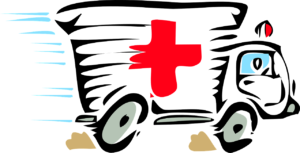
The application “Urgentime” : digital saves lives.
We are in a numeric world, why not to use digital’s tools in the world of healthcare ? That’s the idea of Anthony Tabuyo who has created “Urgentime”. It’s an application that allows real-time filming of accident victims to help emergency doctors and firefighters before they come on the accident site. This great idea results from a bad experience :
“ I came close to paralysis because the driver who ran me over was unable to describe myself.”
– Anthony Tabuyo to France Bleu.

How does application works ?
It may be so difficult to describe a critical condition because we are stressed or shocked. When the witness of accident calls the emergencies, the carers asks him to give his number of phone. After that, the carers put the number in Urgentime , the witness receives a SMS, clicks on a link and the carers can take control of the camera.
The control of the camera’s witness enables to describe the emergency’s nature and to win a precious time. In order to, the health’s personal is understaffed. The video enables to know if the circumstances need a moving, sometimes it’s not, and the carers would have been available for a more vital intervention. When the moving is necessary, they know exactly what to expect and they are faster.
Does this application comply with the General Protection Data Regular (GPDR) ?
The application need the phone number to work. It’s a data. The GPDR is respected because the carer have the consentement of witness to take the control of his camera. The legal basis is : the consent. But what we can complain about Urgentime is the absence of information concerning the data, after the call. The ideal would be a sms send after the call who explain the absence or existence of data processing.
What are the others rights that could be violated by the application ?
As for the image right, people filmed around the victim cannot file a complaint because Urgentime does not record any video, it is strictly only streaming. However, the doctor can take a screenshot in order to save the photo in the medical file on the CHU server. According to case law, legal action can only be taken if there is effective dissemination or publication. As the doctor only records the image on the CHU server without any public broadcast or publication, no legal action can therefore be taken.
As for the victim, she can’t file a complaint because the lack of consent is justified by the urgent nature of the situation and the protection of her vital interests.